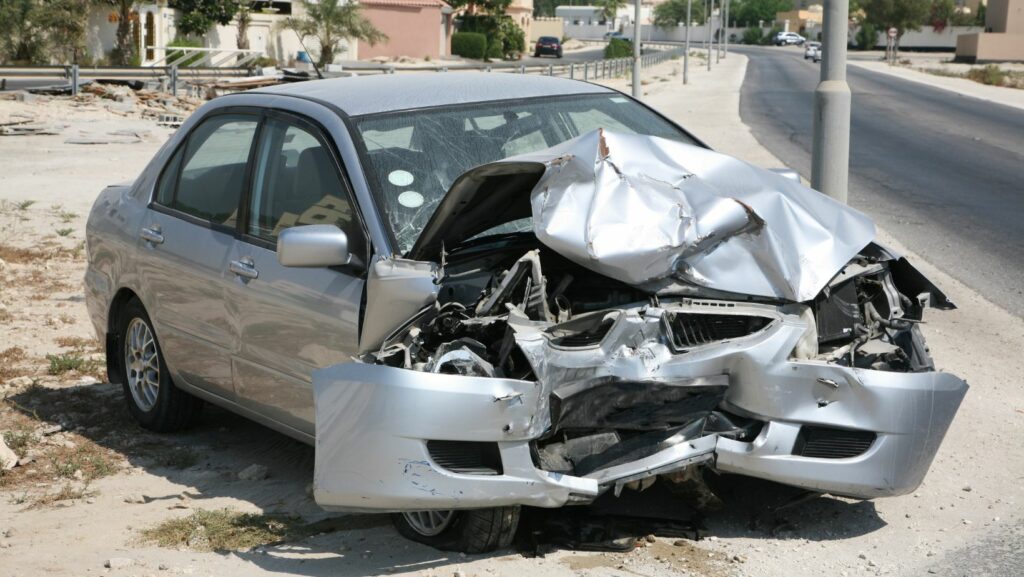We’ve all heard stories or seen headlines about two cars slamming into each other front-to-front on a highway. And it’s always as horrifying as it sounds. A head-on crash is one of the most violent types of collisions a person can experience.
When both cars are moving toward each other, even at average speeds, the energy of the impact combines. So, a car going 45 mph hitting another car also going 45 mph doesn’t feel like a 45 mph crash. It feels like hitting a wall at 90 mph. That’s why injuries in these crashes are usually devastating.
In many of the most severe head-on crashes, something more than just a simple mistake is at play. That means the power to avoid them lies with the decisions we make before we even get behind the wheel.
Here are some of such inspiring factors that trigger these head-on accidents:
Impaired Driving
This is the one cause that shows up in report after report: driving under the influence. Drunk or drug-impaired drivers are behind a huge number of head-on crashes, and that’s not an exaggeration. Impaired drivers often have poor decision-making, delayed reaction times, and, most dangerously, a complete lack of awareness that they’re even doing something wrong.
Impaired drivers are also more likely to be overly confident or aggressive. They might pass into oncoming lanes or ignore signs without blinking. They may not even notice other cars trying to avoid them. This is why impaired driving isn’t just one of the most common causes; it’s one of the most dangerous.
Road Confusion
A driver unfamiliar with a city layout, or even a rural backroad, can easily end up going the wrong direction on a one-way street or misjudging a curve.

In urban areas, especially, one-way streets are everywhere. Miss a sign and you might end up face-to-face with oncoming traffic before you even realize what happened. And in rural areas, sharp turns or narrow roads can catch drivers off guard.
If you’re going even a little too fast, you might cross over into another lane without meaning to.
Mechanical Failures
Even when a driver is doing everything right, their car might not be. Some of the mechanical issues that can lead to a loss of control include:
- Tire blowouts, especially at high speeds
- Brake failure or uneven brake force
- Steering system malfunctions
When something like this happens, it becomes almost impossible to keep the vehicle in your lane. And if it happens on a curve or a narrow road, there might not be enough time to avoid oncoming traffic.
Drowsy Driving
Fatigue dulls your reaction time and messes with your ability to judge distances. You start drifting without noticing, and you might not even feel yourself slipping out of your lane. This makes drowsy driving surprisingly similar to drunk driving.
Bad Weather
We all know that bad weather means more caution, but not everyone adjusts. Rain makes roads slick, fog limits visibility, and snow or ice makes braking unreliable.
All of these conditions raise the risk of skidding or losing control, and once your car starts sliding, you’re no longer in full control of where it goes.
Many drivers don’t reduce their speed or give themselves more space in bad weather, which means they can’t react fast enough to sudden changes. If they hit a slick patch during a turn, they might veer into the oncoming lane. And when visibility is low, even noticing another car becomes difficult until it’s too late.
Reckless Driving Behaviors
Some drivers act like the rules of the road don’t apply to them. Reckless driving takes many forms, but these behaviors are particularly risky on two-lane roads where there’s little room for error:
- Speeding on narrow or curved roads
- Tailgating in stop-and-go traffic
- Swerving between lanes to get ahead
- Ignoring no-passing signs or double yellow lines
These drivers force others to react quickly or swerve, often into danger. One reckless decision can easily lead to a head-on crash.

